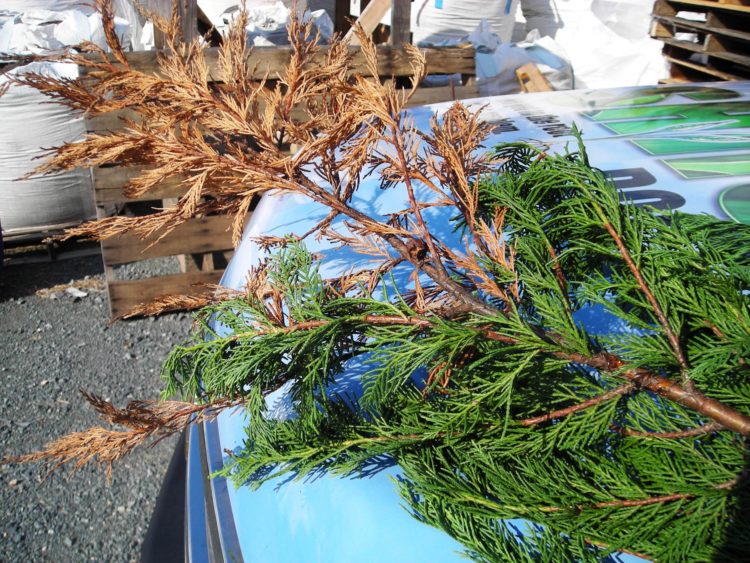

One of the most noticeable symptoms of Seiridium canker is yellowing or browning of the foliage on one or more top or lateral branches. In the landscape, plants of all sizes and ages can be affected by the disease. Although the fungi Seiridium cardinale, Seiridium unicorne, and Seiridium cupressi have been reported to cause disease on Leyland cypress and other needled evergreens, only Seiridium unicorne is most commonly associated with cankers and twig dieback on Leyland cypress in Georgia. In Georgia, Seiridium canker is probably the most important and destructive disease on Leyland cypress in the landscape. Diseases Seiridium Canker and Twig Dieback Disease management is, therefore, a consideration for Leyland cypress. However, because of its relatively shallow root system, and because they are often planted too close together and in poorly drained soils, Leyland cypress is prone to root rot and several damaging canker diseases, especially during periods of prolonged drought. Leyland cypress is considered relatively pest-free. The fine, feathery foliage is composed of soft, pointed leaves on flattened branchlets, dark blue-green when mature but soft and bright green when young.

Leyland cypress forms a dense, oval or pyramidal outline when left unpruned, but the refined, slightly pendulous branches will tolerate severe trimming to create a formal hedge, screen or windbreak. The tree will ultimately attain a majestic height of up to 40 feet. However, when young, the tree will grow up to 3-4 feet per year, even in poor soils. The tree is best suited for fertile, well-drained soils. Leyland cypress (x Cupressocyparis leylandii) is a graceful, rapidly growing evergreen tree that is adapted for growth within the 6-10a USDA hardiness zones. Leyland cypress has become one of the most widely used plants in commercial and residential landscapes across Georgia as a formal hedge, screen, buffer strip, or wind barrier.


 0 kommentar(er)
0 kommentar(er)
